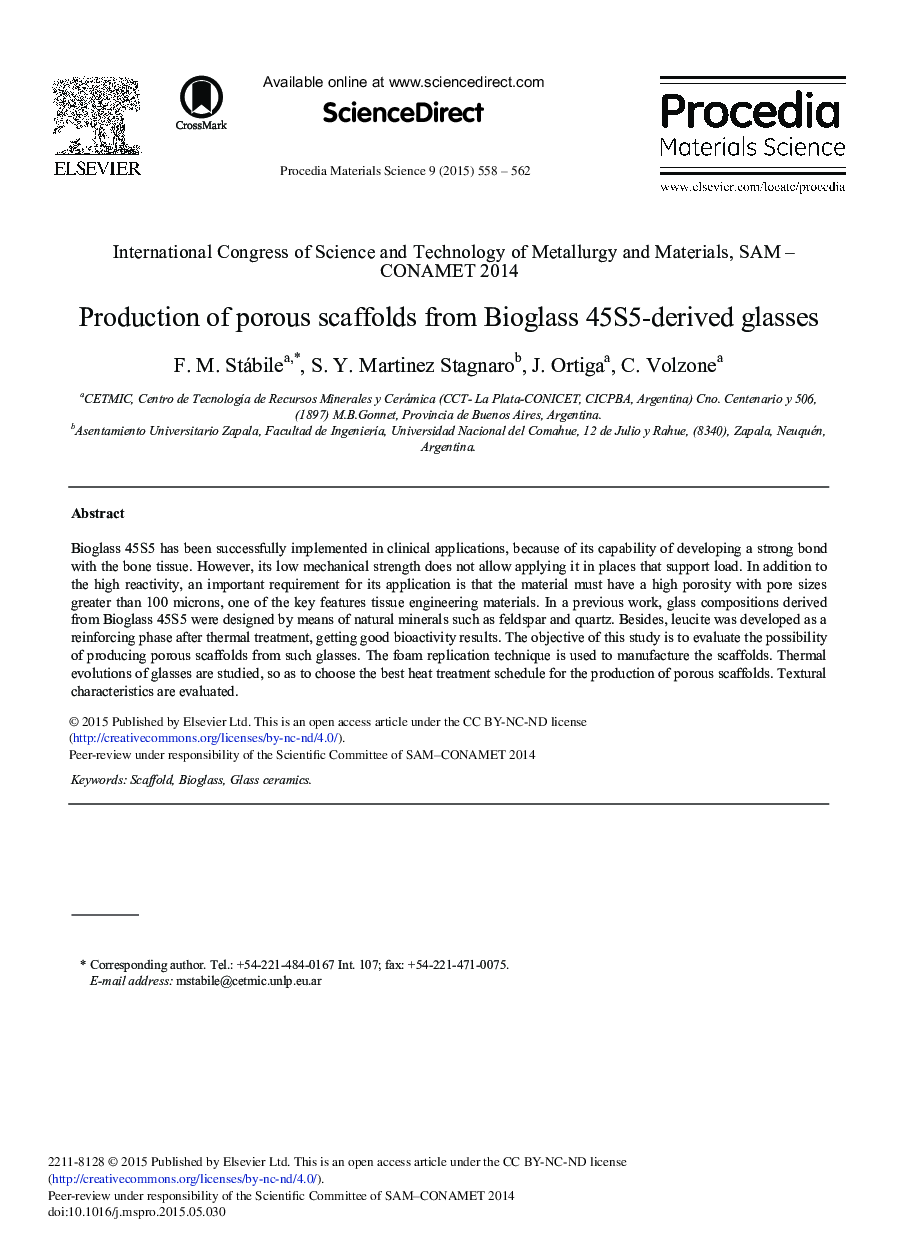| Article ID | Journal | Published Year | Pages | File Type |
|---|---|---|---|---|
| 1634661 | Procedia Materials Science | 2015 | 5 Pages |
Bioglass 45S5 has been successfully implemented in clinical applications, because of its capability of developing a strong bond with the bone tissue. However, its low mechanical strength does not allow applying it in places that support load. In addition to the high reactivity, an important requirement for its application is that the material must have a high porosity with pore sizes greater than 100 microns, one of the key features tissue engineering materials. In a previous work, glass compositions derived from Bioglass 45S5 were designed by means of natural minerals such as feldspar and quartz. Besides, leucite was developed as a reinforcing phase after thermal treatment, getting good bioactivity results. The objective of this study is to evaluate the possibility of producing porous scaffolds from such glasses. The foam replication technique is used to manufacture the scaffolds. Thermal evolutions of glasses are studied, so as to choose the best heat treatment schedule for the production of porous scaffolds. Textural characteristics are evaluated.
